Read The
Current Issue
Photo Gallery: Training Ground
For its cowboy competitors, the Jackson Hole Rodeo is like rodeo college.
Photography by Rebecca Noble // Written by Chance Cook
for A few nights each week from June through August, the Teton County Fairgrounds belong to the Jackson Hole Rodeo. About two hours pass from the time the first bull flies from the chute and when the final cowboy packs his duffle bag, heading for wherever the next bucking horse or bull might be. But, for most of the young cowboys who line the deck behind those chutes, the next rodeo will be right back in Jackson.
The Wilson family, lead by patriarch Phil Wilson, is in their eleventh year at the helm of the rodeo. A good share of the jackets worn behind the chutes have National High School Finals Rodeo patches stitched on (as opposed to pro rodeo patches), and that’s exactly the way the Wilsons want it. The Jackson Hole Rodeo is a training ground of all sorts for young cowboys—a place to learn and perform.
Photographer Rebecca Noble was no stranger to shooting rodeo before embarking on this project, which emphasizes how the Jackson Hole Rodeo helps the development of young cowboys and cowgirls. “The kids are there with this crazy dream of ‘I want to ride bulls,’” Noble says. “And the Wilsons do a lot to make that happen.”
The Wilson family ranch sits south of town off Highway 89. Over the past decade it has grown into something of a rodeo school. There’s a bunkhouse available for visiting cowboys to stay at for weeks at a time. There’s a small practice arena and carefully chosen stock to practice on. There’s even a weight room equipped with a mechanical bucking machine.
“WHAT WE DO is a little different than a pro rodeo or even an amateur rodeo,” Wilson says. Two sections of bull riding open and close at each Jackson Hole Rodeo night. The later section is more akin to traditional rodeo, where the cowboys receive their bull through a draw. The first round is like a development round, where the Wilsons often choose a bull to best match the young rider that will climb atop it.
“We lean our livestock toward the learning-type livestock. It’s not the type of livestock you would see at a pro rodeo,” Wilson says. “Our livestock is all oriented toward the rider, not the animal.”
The Jackson Hole Rodeo is almost a relic in the valley, a holdout of the old Western identity that was once at the heart of the area. Wilson estimates 75 to 80 percent of the spectators in his audience each night are at their first rodeo. They don’t know what makes a good ride and what doesn’t, so when the Wilsons line up livestock to match the level of the rider atop it, the transient crowd knows only that it is seeing successful rides, a few misses, and two hours of nonstop rodeo.
“The crowd loves it, the kid learns from it,” Wilson says, “and it’s a better experience all in all for our rodeo.” JH
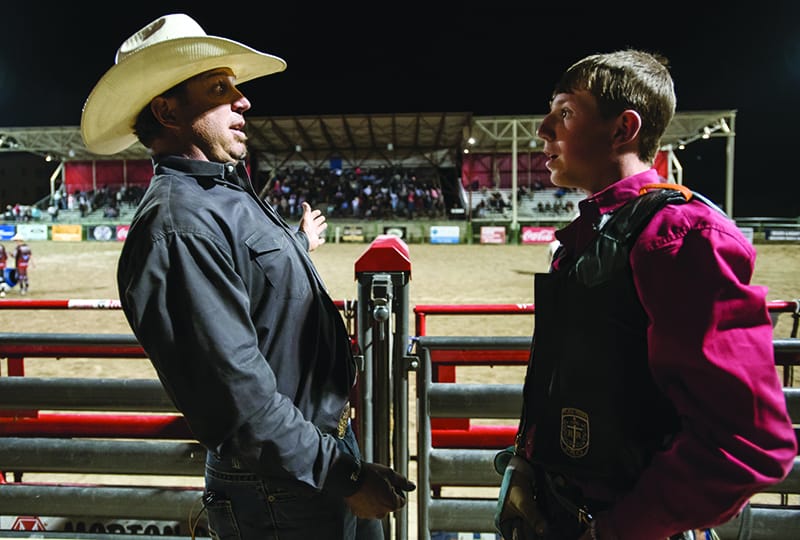
Buskin Wilson, left, gives his nephew Tipton Wilson feedback after his night’s ride. In addition to the array of Buskin Wilson’s duties around the rodeo, he still finds time to get on a bull himself and mentor young bull riders.
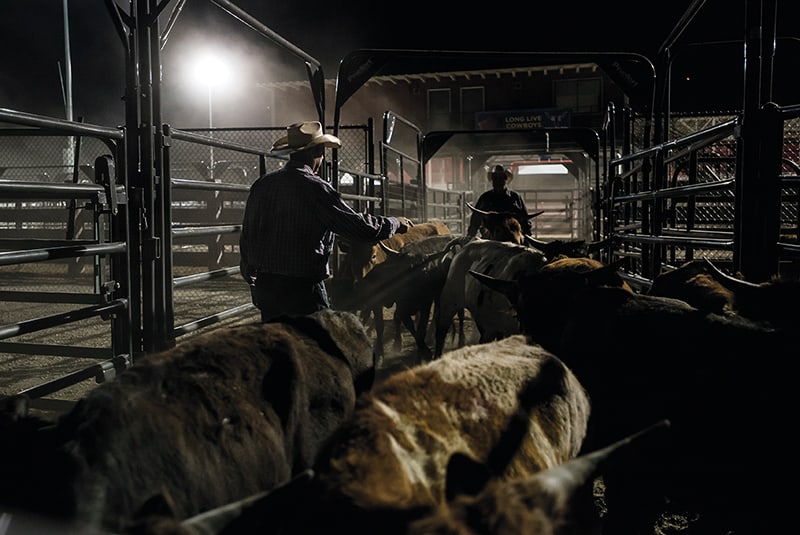
Left: Brothers Bodee and Brandon Wilson herd steers back to the stock truck after the conclusion of a Wednesday night Jackson Hole Rodeo at the Teton County Fairgrounds.

The Wilsons’ official Jackson Hole Rodeo button-ups emblazoned with their first names hanging at the Teton County Fairgrounds.
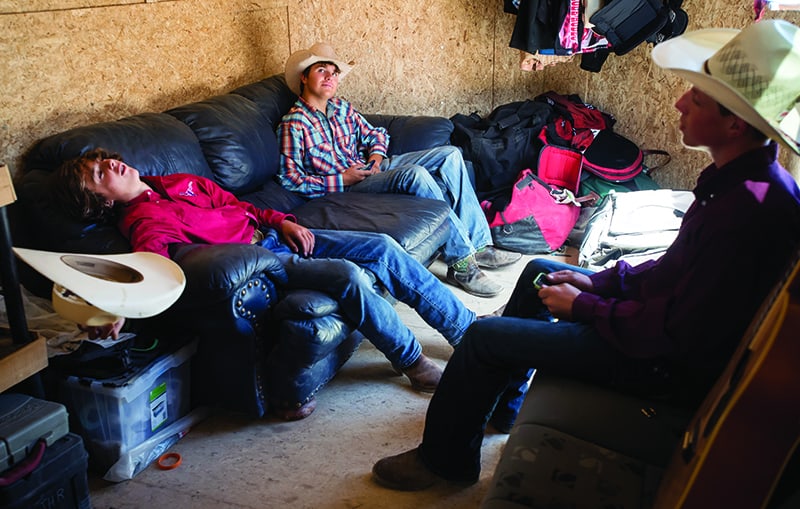
From left, Jace Warinski, Tucker Wilson, and Tipton Wilson rest after completing the morning’s chores to prepare the Teton County Fairgrounds for the evening’s performance.
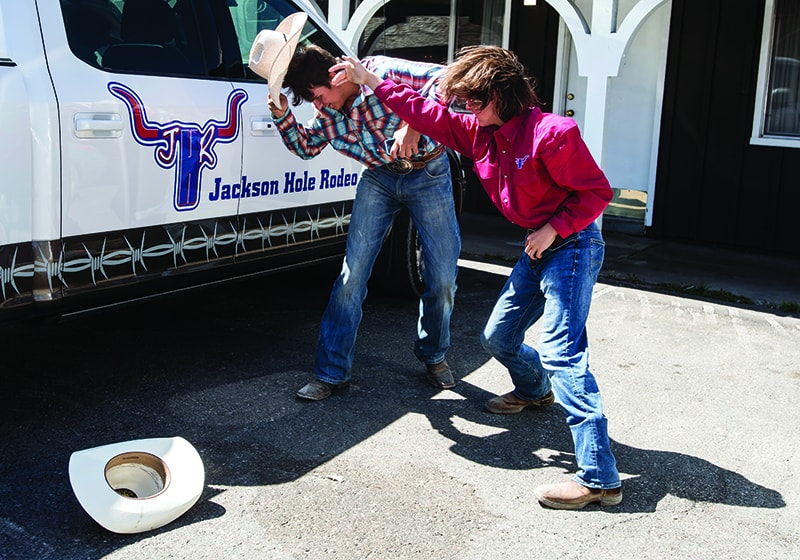
Tucker Wilson, left, protects his hat from Jace Warinski, right, as they wrestle in the parking lot of The Virginian Lodge before a Wilson family and friends lunch.
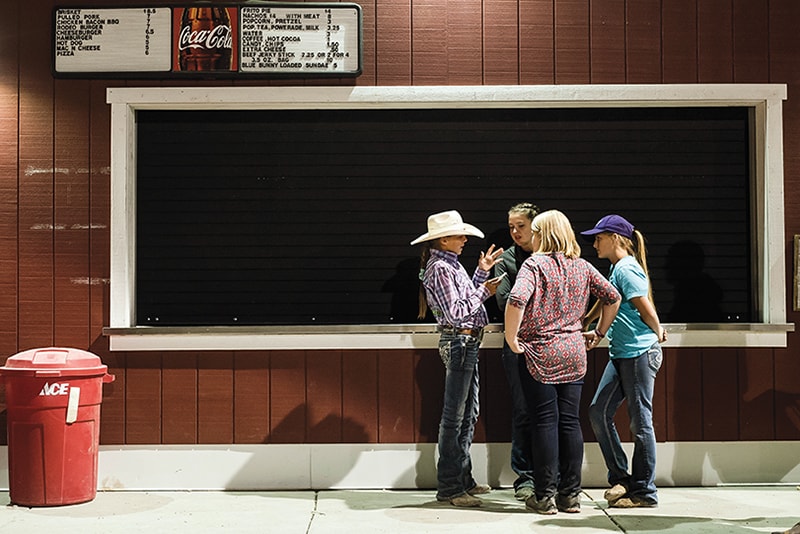
Buskin Wilson’s daughter Dally (in cowboy hat) ropes and barrel races. Here, she chats with friends after competing at a Wednesday night rodeo.




